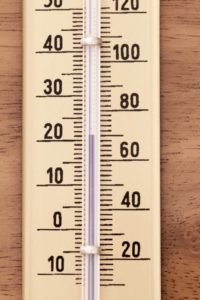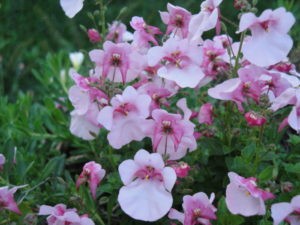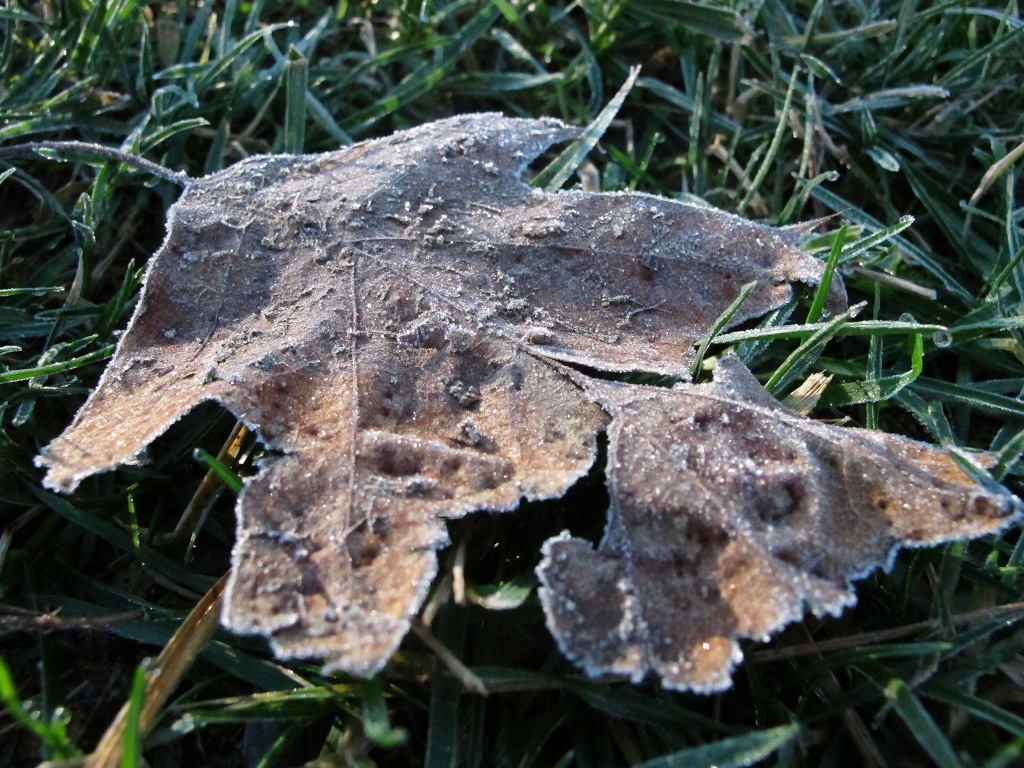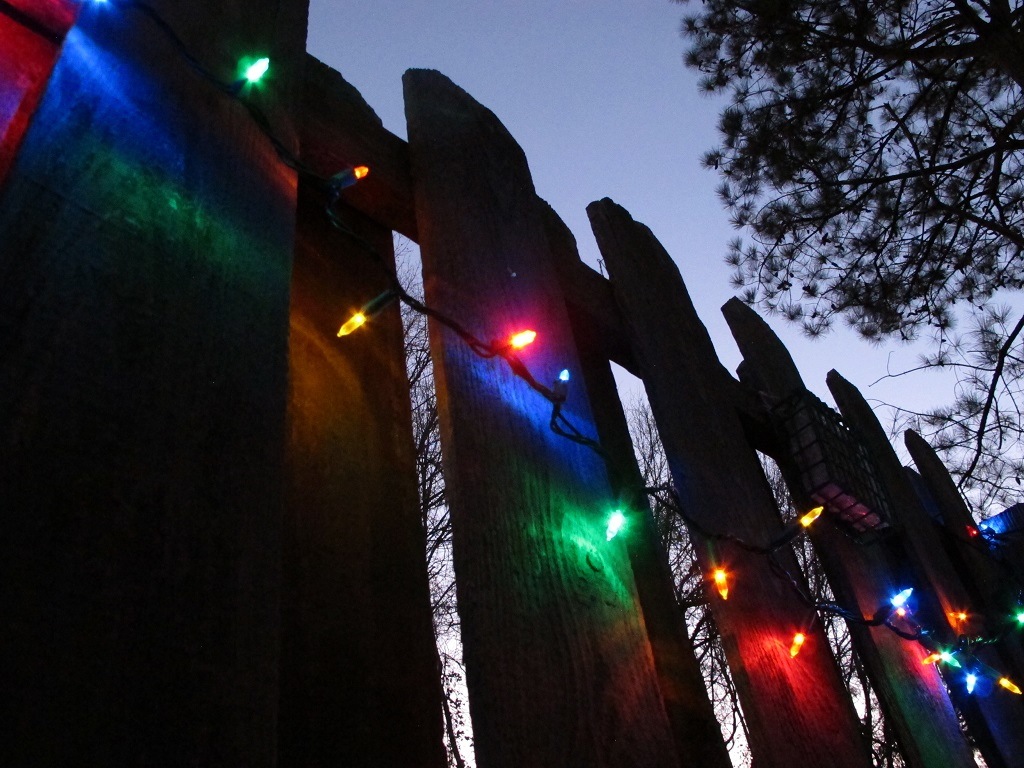Just when you thought it was safe to plant tomatoes!
Microclimate

C and F.
Call it impulse or ignorance, the natural inclination for most of us gardeners is to push the season. I’ll admit it; I planted tomatoes and a sweet pepper here in North Carolina about 2 weeks ago, knowing very well that I might have to protect them at night.
But I’m ready, with plastic bags and bamboo stakes, and large sheets of clear plastic, if needed. Plus, the garden is located close to the warmer south side of the house. The sun’s warmth collects in the soil and in the wall, releasing it slowly over the nighttime hours. Peppers are more sensitive to chilly temperatures, so they get covered first.
Even though this cozy little microclimate gives a few degrees of protection, I’m not about to cause any discomfort to my new plants, nor to check their growth. So, I covered them when the nighttime temperature was predicted to fall below 50°F. That’s not even close to freezing, but that’s what I mean. I don’t want them to get close to freezing. And neither do they!
Incidentally, research indicates that tomatoes and peppers might yield more fruit if they have been exposed, when young, to temperatures in the high 40’s to low 50’s. But those plants will need to have been fully hardened off in order to withstand the less hospitable environment.
Microclimate: Where To Find It
Maybe your property has a warmer microclimate that will protect newly planted flowers or vegetables. Close to the south side of the house, a shed or garage could work. Or the sunny side of a solid fence. Perhaps your vegetable and cutting gardens are surrounded by massive stone walls…perfect. A dense hedge will cut wind speed and offer some protection.
A sunny porch, carport, or the protected corner of a patio might keep those young plants happier than if they were planted out in the garden just now. Who isn’t tempted by those first plants offered at garden centers, even though we know it’s way too early?
Direct sunlight warms the soil and surrounding structures. The area needs to be open to the southern sky (if you live in the northern hemisphere). A garden on the south side of a brick wall is great, but not if it’s shaded by a white pine tree. Dark colors absorb more of the sun’s energy, so they’ll release more warmth at night.
You can create a microclimate simply by covering sensitive plants with old bedsheets or sheets of plastic before the sun sets. Prop them up so the material is not touching the tender foliage. During the shoulder seasons, temperatures can fluctuate between seasonal and cruel. There are limits to the degree of protection afforded by microclimates.
Another option is to construct a temporary cold frame, with some sort of a support (bales of hay, cinderblocks, wooden boards) and a clear covering (lead-free old windows, patio door, clear rigid plastic, or plastic film). The cold frame can stay in place for as long as it serves your purpose, but you’ll need to open the covering to let cool, fresh air inside. Heat builds up quickly under clear glazing.
Always Check the Weather Forecast
In this Zone 7b location, April 15th is considered “safe” for most tender, main season edibles and flowers, but it is always advised to check the weather forecast daily. If the forecast had called for a long stretch of cold rainy weather, I would have delayed planting. No one wants to be planted in cold, wet soil.
More sensitive species, such as cucumber, zucchini, and basil, will not be planted until the soil has warmed up considerably.

Diascia ‘Flirtation’ is one of my favorites for the shoulder seasons, when it could be warm or frosty.
Among flowers, caladium, scaevola, streptocarpella, zinnia, and vinca are a few that prefer warm soil before planting out. Their foliage will wilt or show damage even if the temperature hasn’t reached the freezing point.
The alyssum, snapdragon, and diascia, however, did just fine without protection, and even prefer cooler temperatures.
Frost occurs first out in the open—in the middle of the lawn or on the rooftops. Plants that can tolerate cool temperatures will be unharmed in a protective microclimate. They might be damaged, however, if they’re far from the house and subjected to a freeze. Just 5 or 10′ can make a difference!
Frost Last Night
This morning I was surprised to see frost on the rooftops and ice in the puddles on top of the cold frame. It wasn’t “supposed” to get below 35°, but the temperature dropped well below freezing. The plants in the cold frame and in the garden are fine. Late yesterday afternoon, I covered the tomatoes and the pepper with large, heavy plastic bags (with more plastic bags layered inside for insulating dead air space) supported by a couple of sticks in the ground.
The larger the “footprint” of the covering, the better; the larger area of covered soil allows more heat stored in the ground to rise. And it was breezy yesterday, so a couple of bricks held the plastic in place.
Don’t forget to uncover the plants in the morning, as soon as sunlight reaches the area. It doesn’t take long for the inside air temperature to rise high enough to stress the plants.
There are some tricks you can use to fool…or assist…Mother Nature, and I’ll write about those in the future. You might want to adopt some common sense methods of protecting plants to stretch the season. In addition to taking advantage of microclimates, one of those tricks involves strings of miniature incandescent lights, like the ones you strung on the Christmas tree. So don’t pack them away in the attic just yet!

